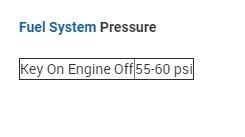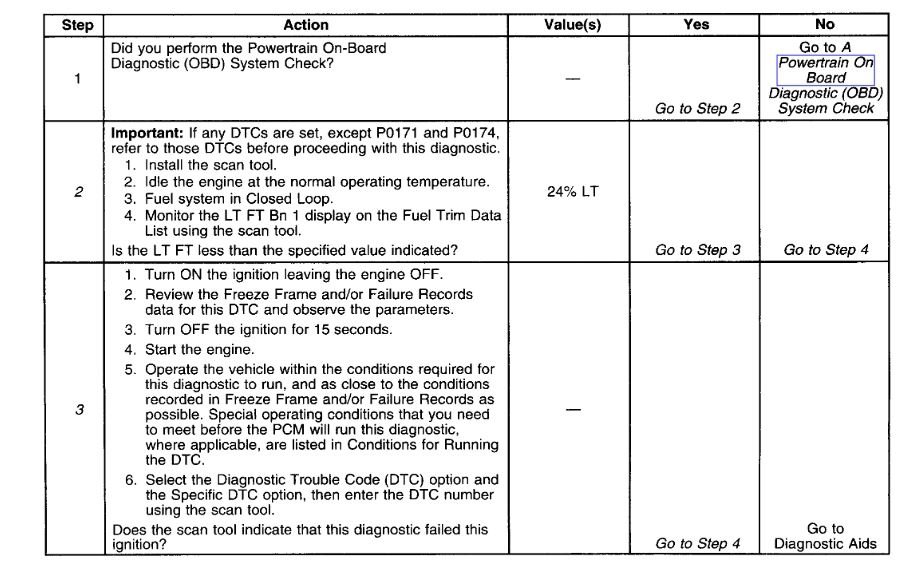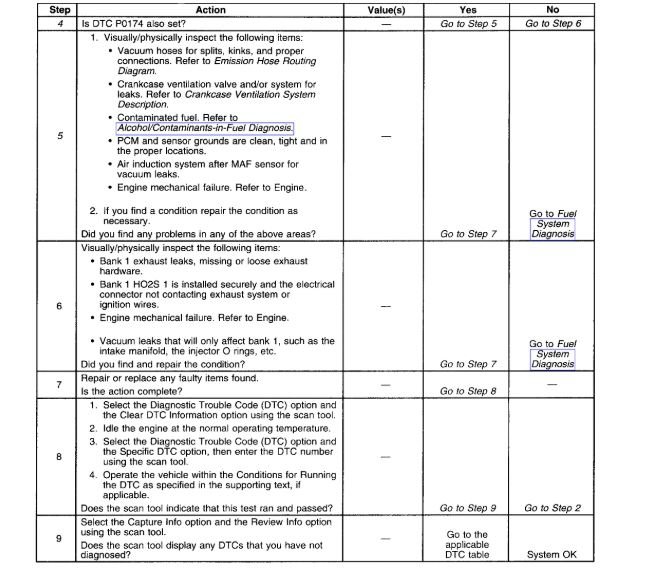Good morning,
The high idle when you push the clutch pedal while moving is normal. When you stop, it should return to a normal idle.
As far as the other issue, check the fuel pressure. Low fuel pressure from a bad fuel pump will cause this issue. It would also explain the 171,174 codes which are lean codes.
https://www.2carpros.com/articles/repair-lean-mixture-codes-p0171-or-p0174-on-some-manufacturers
https://www.2carpros.com/articles/how-to-check-fuel-system-pressure-and-regulator
The backfiring could be from bad ignition wires, distributor cap, or ignition coil leaking out electric under load.
https://www.2carpros.com/articles/engine-backfires-while-running
Roy
CIRCUIT DESCRIPTION
The PCM controls a Closed Loop air/fuel metering system in order to provide the best possible combination of driveability, fuel economy, and emission control. The PCM monitors the heated oxygen sensor signal voltage and adjusts the fuel delivery based on the signal voltage while in Closed Loop. A change made to the fuel delivery changes the Long and Short Term Fuel Trim values. The Short Term Fuel Trim values change rapidly in response to the HO2S signal voltages. These changes fine tune the engine fueling. The Long Term Fuel Trim values change in response to trends in Short Term Fuel Trim. The Long Term Fuel Trim makes coarse adjustments to fueling in order to re-center and restore control to Short Term Fuel Trim. You can use a scan tool in order to monitor the Short and Long Term Fuel Trim. The ideal fuel trim values are around 0 percent. A positive Fuel Trim value indicates that the PCM is adding fuel in order to compensate for a lean condition. A negative Fuel Trim value indicates that the PCM is reducing the amount of fuel in order to compensate for a rich condition. If the PCM detects an excessively Rich or Lean condition, the PCM sets a DTC. The long term fuel trim diagnostic parameter is an average of several of the long term speed load learn cells which the PCM selects based on the engine speed and the engine load.
CONDITIONS FOR RUNNING THE DTC
DTCs P0101, P0102, P0103, P0107, P0108, P0112, P0113, P0117, P0118, P0121, P0122, P0123, P0125, P0200, P0300, P0335, P0336, P0351-P0358, P0405, P0410, P0412, P0418, P0443, P0500, P0502, P0503, P1258, P1404, P1415, P1416 not set.
The engine coolant temperature is between 50°C (122°F) and 115°C (239°F).
The barometric pressure is more than 74 kPa.
The mass air flow is between 5.0 g/s and 90 g/s
The manifold absolute pressure is between 26 kPa and 90 kPa.
The intake air temperature is between -20°C (-4°F) and 90°C (194°F).
The engine speed is between 400 RPM and 3,000 RPM.
The TP sensor angle is less than 90 percent.
The vehicle speed is less than 137 km/h (85 mph).
The fuel level is more than 10 percent.
CONDITIONS FOR SETTING THE DTC
The average Long Term Fuel Trim cell values are above a predetermined threshold.
All the above conditions are present for 6 seconds.
ACTION TAKEN WHEN THE DTC SETS
The PCM illuminates the Malfunction Indicator Lamp (MIL) on the second consecutive ignition cycle that the diagnostic runs and fails, if the diagnostic fails under the same conditions (load, RPM, temperature, etc.) as the previous ignition cycle that the test ran and failed.
The first time the diagnostic fails, the PCM records the operating conditions in Failure Records.
The second consecutive ignition cycle that this diagnostic fails [under the same conditions (load, RPM, temperature, etc.) as the previous ignition cycle that the test ran and failed], the PCM stores this information in Freeze Frame. The PCM copies any data previously stored in Freeze Frame and copies the data into the Failure Records. The PCM then overwrites the Freeze Frame. The only exception to this is if a Misfire DTC was already recorded in Freeze Frame. In this case, the Misfire data stays in Freeze Frame and the PCM updates the Fuel Trim data in the Failure Records.
CONDITIONS FOR CLEARING THE MIL/DTC
The PCM turns the MIL OFF after three consecutive ignition cycles that the diagnostic runs and does not fail within the same conditions that the DTC last failed.
IMPORTANT: If the last failure was during a non-typical driving condition, the MIL may remain ON longer than the three ignition cycles. Review the Freeze Frame/Failure Records for the last failure conditions.
A History DTC clears after forty consecutive warm-up cycles, if this or any other emission related diagnostic does not report any failures.
A last test failed (Current DTC) clears when the diagnostic runs and does not fail.
Use a scan tool in order to clear the MIL/DTC.
DIAGNOSTIC AIDS
IMPORTANT:
Remove any debris from the PCM connector surfaces before servicing the PCM. Inspect the PCM connector gaskets when diagnosing/replacing the PCM. Ensure that the gaskets are installed correctly. The gaskets prevent contaminant intrusion into the PCM.
For any test that requires probing the PCM or component harness connectors, use the J 35616-A connector test adapter kit. Using this kit prevents any damage to the harness connector terminals. Refer to Using Connector Test Adapters in Diagrams for procedures.
This DTC sets if the engine runs out of fuel. A fuel delivery malfunction causes this DTC to set. Thoroughly inspect all items that cause a lean condition.
Using the Freeze Frame and/or Failure Records data may aid in locating an intermittent condition. If you cannot duplicate the DTC, the information included in the Freeze Frame and/or Failure Records data can help determine how many miles since the DTC set. The Fail Counter and Pass Counter can also help determine how many ignition cycles the diagnostic reported a pass and/or a fail. Operate the vehicle within the same freeze frame conditions (RPM, load, vehicle speed, temperature etc.) that you observed. This will isolate when the DTC failed.
For an intermittent condition, refer to Symptoms. See: Computers and Control Systems > Symptom Related Diagnostic Procedures
Images (Click to make bigger)
Friday, June 26th, 2020 AT 5:52 AM





